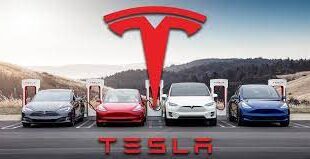When the idea of re-creating the process that powers the sun here on Earth felt more like a thought experiment or a science fiction premise than a viable part of our global energy mix, it was easy to imagine equally far-fetched outcomes. We imagined that fusion would be limitless, unstoppable, the holy grail of clean energy and a silver bullet for the climate crisis. But now that commercial nuclear fusion is finally growing closer to reality, it’s time to ask questions about the actual logistics of scaling the technology up and out, and to acknowledge and account for its various limitations.
Fusion technology is seeing fast and furious advancement. There have been many major and minor breakthroughs in recent months and years as renewed interest and investment have been poured into fusion research and development. But one experiment in particular has tipped the commercial nuclear fusion scales from pipe dream to possibility. Last December, researchers at the National Ignition Facility (NIF) in California made a massive breakthrough when they became the first team to finally break through what is still nuclear fusion’s most significant: creating net positive energy from the reaction. The now legendary experiment in California used lasers to beam 2.05 megajoules of light onto a tiny amount of fusion fuel (about the size of a peppercorn), sparking an explosion that ultimately produced 3.15 MJ of energy – approximately the equivalent of three sticks of dynamite.
But there’s an important caveat to their massive achievement. While the NIF experiment created more energy than was directed beamed into its target, it still was a net energy drain. The laser in the experiment still burned far more energy than just what was beamed onto the fuel, and more than what was ultimately produced. In fact, Wired reported last year that in all likelihood, “the real fusion energy breakthrough is still decades away.”
The main thing standing in the way of commercialized nuclear fusion is cost. At present, nuclear fusion research is ridiculously expensive. The up-front costs for building facilities capable of hosting a fusion reaction are enormous. For this reason, the vast majority of fusion experiments have been publicly funded, as governments were more or less the only entities with deep enough pockets to afford it. But even ITER, the world’s biggest fusion experiment co-funded by 35 nations in the South of France, is currently vastly over budget and behind schedule.
But the promise of nuclear fusion remains alluring, and money continues to flow into finding a way to make fusion scientifically and economically viable. The Biden administration’s Inflation Reduction Act earmarked $280 million for fusion projects. Private entities, too, have increasingly gotten involved in fusion in recent years as its potential for future profitability comes into view. That list includes such heavy hitters as Jeff Bezos, Peter Thiel, Lockheed Martin, Goldman Sachs, Legal & General, and Chevron.
So far, however, no one has cracked the code on how to make nuclear fusion anything close to affordable. It’s difficult to imagine that nuclear fusion could possibly become cost-competitive with renewable energies like wind and solar any time soon – if at all. “But fusion may still find its place, because the grid needs energy in different forms and at different times,” Wired wrote in a recent report. But that place will likely be one part of a varied and diverse energy mix, much like how nuclear fission fits into the current energy landscape.
Despite what some grandiose headlines have promised, nuclear fusion will likely fill some important energy niches, but it will never serve all of our energy needs. That doesn’t mean, however, that the research unfolding now isn’t worth it. In order to build toward a sustainable, carbon-free future, every form of clean energy production counts. And just because we can’t imagine an avenue for cheap and abundant nuclear fusion now, it doesn’t mean it will never happen. But we can be certain it’s not happening any time soon.

 Iran Energy News Oil, Gas, Petrochemical and Energy Field Specialized Channel
Iran Energy News Oil, Gas, Petrochemical and Energy Field Specialized Channel



